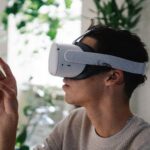Anxiety, a common and often overwhelming experience, can significantly impact the daily lives of individuals. From social interactions to work and everyday routines, anxiety can be severely limiting. Fortunately, anxiety doesn’t have to be a life-long experience, as there are multiple treatments available for anxiety. One of the most effective and evidence-based approaches to anxiety comes in the form of exposure therapy.
Understanding Exposure Therapy
Exposure therapy is a form of behavioural therapy designed to help people overcome their fears. When people fear an object, activity, or situation, they will likely avoid it. While avoidance may temporarily reduce fear or anxiety, it may worsen over time, making it ineffective. Exposure therapy involves exposing a person to an anxiety-provoking object or situation. This is generally done in a safe environment, with the help of a trained therapist. Over time, this type of controlled and guided exposure can help reduce feelings of anxiety and decrease avoidance.
Forms of Exposure Therapy
Exposure Therapy can be used in many forms. The therapist generally determines the appropriate strategy based on the symptoms and intensity of anxiety experienced by an individual. The different forms of exposure therapy are:
- In-Vivo Exposure: It involves facing the anxiety-provoking object or situation in real life, in the presence of a therapist.
- Imaginal Exposure– It involves vividly imagining an anxiety-provoking situation or object. For ex. someone with a fear of exams might be asked to imagine themselves writing an exam in the exam hall.
- Virtual Reality Exposure: It is not always possible to recreate or imagine an anxiety-provoking situation. In such cases, virtual simulation might be used to provide exposure. For Ex- Fear of driving or flights
- Interoceptive exposure: Involves deliberately inducing physical sensations that are considered anxiety-provoking, but harmless.
Is Exposure Therapy Effective?
A lot of research has been conducted on the effectiveness of exposure therapy for different forms of anxiety disorders. The results are as follows:
- A 2015 research review showed that imaginal exposure, used alongside Cognitive Behaviour Therapy (CBT) can improve general functioning in people with Generalized Anxiety Disorder (GAD)
- The same 2015 research review mentioned above also reported that exposure can help reduce symptoms of social anxiety, with or without the use of CBT.
- A 2018 study reported that Virtual Reality exposure can help reduce symptoms of driving-related anxiety Similar results were replicated in another study conducted in 2020.
- Another meta-analysis conducted in 2007 suggests that virtual exposure is as effective as in-vivo exposure in the treatment of anxiety disorders.
- A study conducted in 2011 found that exposure therapy is as effective as cognitive therapy in treating Panic Disorder, PTSD and OCD.
- Numerous studies have demonstrated that exposure, along with response prevention,n is effective in the treatment of OCD.
Benefits of Exposure Therapy
- It is a tried and tested approach for multiple anxiety disorders.
- Exposure can help individuals feel empowered by encouraging them to face the feared situation while managing their anxiety. This can increase self-confidence.
- Individuals can decide the pace of their treatment with their therapist.
- Exposure therapy can bring about lasting changes by addressing the root causes of anxiety and fear.
Conclusion:
Exposure therapy is an empowering approach to treating anxiety disorders. It is effective across conditions such as social anxiety, panic disorder, specific phobias and OCD. Additionally, it can be customized based on individual needs and also combined with other techniques such as CBT and ERP to increase its effectiveness.
References:
- Costa, R. T. da, Carvalho, M. R. de, Ribeiro, P., & Nardi, A. E. (2018). Virtual reality exposure therapy for fear of driving: Analysis of clinical characteristics, physiological response, and sense of presence. Brazilian Journal of Psychiatry, 40, 192–199. https://doi.org/10.1590/1516-4446-2017-2270
- Exposure Therapy for Anxiety: What to Expect and Effectiveness. (2021, June 10). Healthline. https://www.healthline.com/health/anxiety/exposure-therapy-for-anxiety
- Kaczkurkin, A. N., & Foa, E. B. (2015). Cognitive-behavioral therapy for anxiety disorders: An update on the empirical evidence. Dialogues in Clinical Neuroscience, 17(3), 337–346.
- Kaussner, Y., Kuraszkiewicz, A. M., Schoch, S., Markel, P., Hoffmann, S., Baur-Streubel, R., Kenntner-Mabiala, R., & Pauli, P. (2020). Treating patients with driving phobia by virtual reality exposure therapy – a pilot study. PLoS ONE, 15(1), e0226937. https://doi.org/10.1371/journal.pone.0226937
- Ougrin, D. (2011). Efficacy of exposure versus cognitive therapy in anxiety disorders: Systematic review and meta-analysis. BMC Psychiatry, 11(1), 200. https://doi.org/10.1186/1471-244X-11-200
- Parker, Z. J., Waller, G., Duhne, P. G. S., & Dawson, J. (2018). The Role of Exposure in Treatment of Anxiety Disorders: A Meta-Analysis. International Journal of Psychology.
- Powers, M. B., & Emmelkamp, P. M. G. (2008). Virtual reality exposure therapy for anxiety disorders: A meta-analysis. Journal of Anxiety Disorders, 22(3), 561–569. https://doi.org/10.1016/j.janxdis.2007.04.006
- What Is Exposure Therapy? (n.d.). Https://Www.Apa.Org. Retrieved December 29, 2023, from https://www.apa.org/ptsd-guideline/patients-and-families/exposure-therapy

